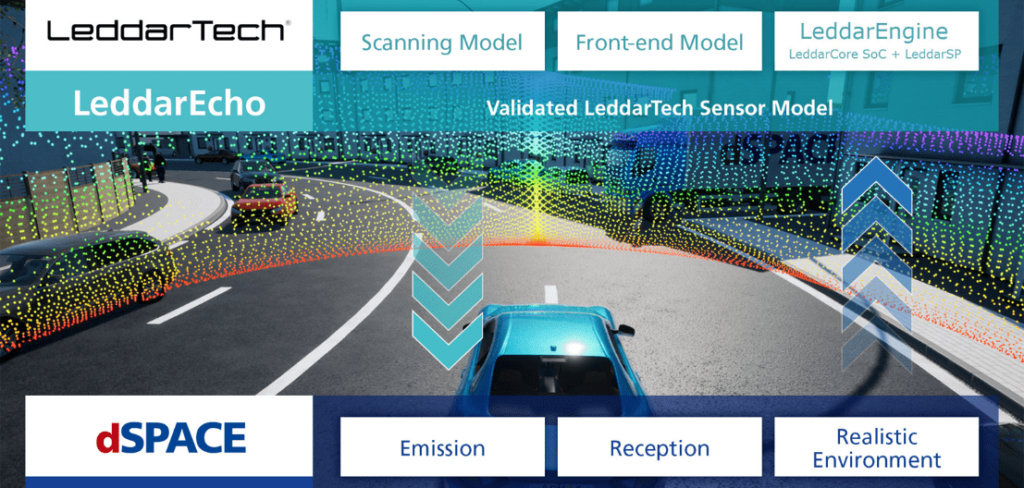LeddarTech, a specialist in ADAS and AD sensing technology, and dSpace, a provider of simulation and validation solutions, have announced the launch of LeddarEcho, a lidar simulation software for Tier 1 sensor and perception system developers.
The software uses dSpace’s sensor-realistic Aurelion simulator to emulate the lidar sensor’s operation in a series of phases by providing a high-fidelity automotive front lidar sensor model for software-in-the-loop (SIL) and hardware-in-the-loop (HIL) applications.
The simulation model is the result of a partnership between the two companies – announced in December 2020 – to jointly drive the development of lidar technologies by providing high-precision simulation tools and models to support and significantly accelerate development.
Currently, sensing platform and perception system development requires the integration and calibration of the actual sensor hardware on a vehicle and the conventional data acquisition and annotation, which are expensive and time-consuming processes. With LeddarEcho, developers will be able to simulate different sensor concepts and combinations and validate the sensor design requirements without needing to assemble the entire system.
Furthermore, by providing valuable data via the simulation models, LeddarEcho supports the efficient development of perception systems, from sensor selection and platform architecture to data acquisition and annotation. Essential functionality for these tasks is provided by Aurelion, which enables sophisticated physics-based sensor models and photorealistic visualization.
“LeddarEcho was developed using the physics-based Aurelion sensor simulation from dSpace. The lidar front-end sensor model will enable our customers to efficiently develop, simulate, validate and optimize LeddarEngine-based lidar sensor designs using dSpace SIL and HIL testing environments,” explained Christopher Wiegand, strategic product manager at dSpace. “This validation includes physically accurate simulation of the lidar and the vehicle environment, including moving objects such as vehicles and pedestrians, as well as the road and other static objects such as traffic signs or curbs.”


